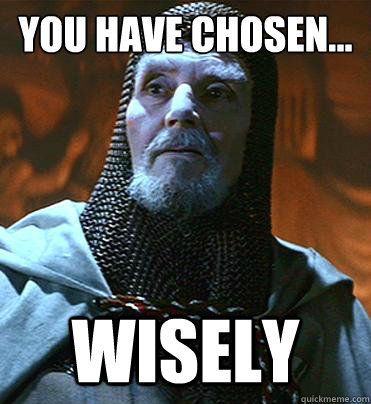
People think focus means saying yes to the thing you’ve got to focus on. But that’s not what it means at all. It means saying no to the hundred other good ideas that there are. You have to pick carefully. I’m actually as proud of the things we haven’t done as the things I have done. Innovation is saying no to 1,000 things.
— Steve Jobs
Strategy calls for making choices. That means saying “yes” to some things and “no” to others. The latter is the harder of the two.
Leaders often face options that seem equally compelling but are mutually exclusive; choosing one means forgoing the other. Economists talk about the opportunity cost of a decision: the potential value we give up when we choose one option over another. Let’s say you have enough budget to invest in one of two promising projects. The opportunity cost of choosing project A is whatever value project B would’ve generated. If it turns out B’s value would’ve been higher than A’s, you made a poor choice.
How do you know?
For one thing, you must understand the range options open to you. Are A and B truly your only alternatives? You must also be clear on what each option entails; after all, you’re being asked to forecast their future performance. The more clearly you understand the options, the more confident you’ll be that you’re making the right choice.
You must also frame the premise of the decision correctly. For example, you must understand your time perspective; option A may have higher returns in the near-term, while option B may perform better in the long-term. You must also understand how each option leverages interdependencies with other elements of the organization, how each supports or hinders broader organizational initiatives, and how each “reads” in the overall competitive landscape.
These are not trivial tasks. Leaders are very busy people, and they’re beset with many other interests competing for their attention — not least of which includes advocates for the choices in question. Operating in high-stakes, high-pressure, fast-moving environments can result in leaders delegating decisions to their guts, falling prey to groupthink, or over-reliance on the most compelling/loudest advocates. While these MOs may occasionally pay off, they’re gambles.
Designers can be key partners in the strategic decision-making process. For one thing, designers are experts at understanding context: translating research data into coherent pictures of the parts of the world leaders care about and — more importantly — extracting actionable insights from those pictures. For another, designers also make possibilities tangible, giving leaders the ability to run validating tests against their riskiest assumptions. While nothing can predict future performance with absolute certainty, prototypes can help obviate alternatives that may be more compelling in spreadsheets than in real-world conditions.
You can only be proud of the things you haven’t done if you’re certain that you’ve done better things in their stead. Tough choices call for clarity and understanding. Beyond merely helping make products, services, and experiences more useful and delightful, designers can also help you see your context more clearly so you can choose more wisely.